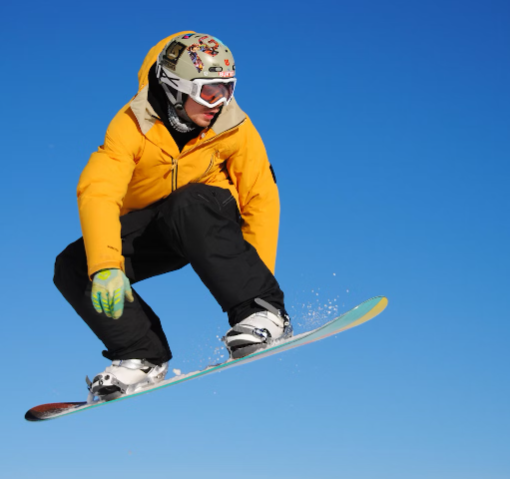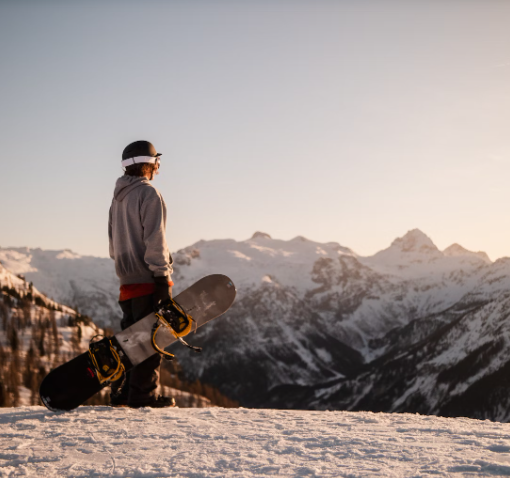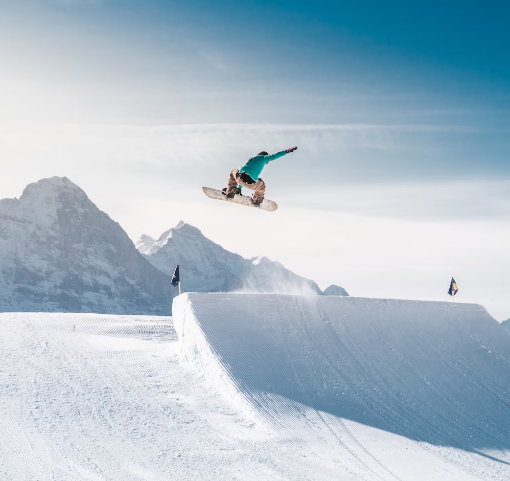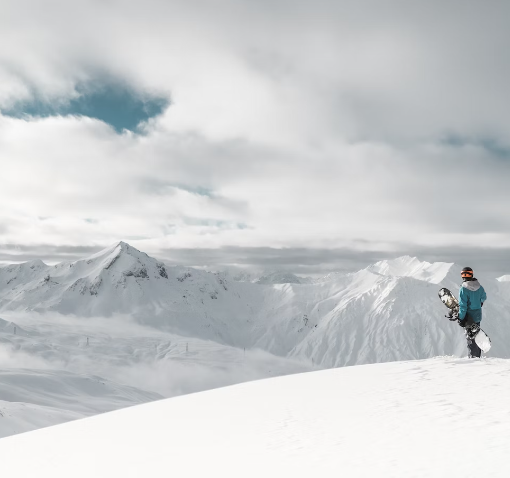
Freestyle snowboarding is a popular winter sport that involves performing aerial maneuvers and tricks on a snowboard. It combines the thrill of high-flying acrobatics with the core snowboarding skills of turning, balance, and edge control. This guide will provide an introduction to freestyle snowboarding, covering the basics of the sport, the equipment needed, learning key techniques, and tips for progressing from beginner to advanced.
The Origins and Growth of Freestyle Snowboarding
Freestyle snowboarding originated in the 1980s when snowboarders began borrowing tricks from skateboarding and surfing to spice up their downhill runs. Some credit Terry Kidwell as the inventor of the first aerial snowboarding manoeuvre, the surf-inspired air, performed in Tahoe in 1979. In the 1990s, snowboarding’s inclusion in the 1998 Winter Olympics boosted the sport’s popularity and visibility. Freestyle events were added soon after, helping freestyle snowboarding grow into the dynamic, progressive sport it is today.
| Decade | Key Freestyle Milestones |
|---|---|
| 1980s | First aerials, adoption of skate/surf tricks |
| 1990s | Inclusion in Winter Olympics, addition of freestyle events |
| 2000s | Rapid progression of trick difficulty and variety |
| 2010s | 1440s, 1620s, triple corks landed in competition |
Freestyle snowboarding has evolved rapidly over the past decades. The difficulty and variety of tricks has increased dramatically, from straight airs to 720s, 1080s, 1440s, and beyond. Slopestyle courses have become more complex, now involving multiple features like boxes, rails, and immense jumps. Halfpipe riding has soared to new heights as well – almost literally, with elite riders now clearing over 20 feet above the pipe walls.
Freestyle Snowboarding Disciplines
There are a few main freestyle snowboarding disciplines:
- Slopestyle – Riders perform tricks while navigating a course with obstacles like rails, boxes, kickers, and jumps. Runs are judged based on difficulty, variety, execution, and amplitude of tricks.
- Halfpipe – Riders perform tricks by travelling back and forth on the steep walls of a U-shaped halfpipe feature. As with slopestyle, judges focus on the difficulty, variety, execution, and amplitude of tricks.
- Big Air – Riders launch off a single, enormous kicker to perform their biggest, most technical tricks possible. Height and difficulty are paramount in big air judging.
- Rail Jam – A rail jam contest focuses exclusively on rail and box tricks. Competitors creatively link tricks on a slope course set up with various rails, boxes, and other obstacles.
Freestyle snowboarders often specialise in one or two disciplines, but may compete in several over the course of a season.
Freestyle Snowboarding Equipment
Having the proper gear is important for learning freestyle snowboarding safely and effectively:
- Snowboard – Freestyle-specific boards are shorter, lighter, and more flexible than all-mountain boards to allow for easier rotation and stability on rails, boxes, and in the air. Twin-tip shape is also key.
- Bindings – Bindings with ample lateral flex give riders the freedom to tweak tricks. Higher backs provide response and stability for landing jumps.
- Boots – Lightweight, flexible freestyle boots maximise board feel and control. They also minimise leg fatigue from repetitive ollies and absorbing harsh landings.
- Helmet – A certified snowsports helmet provides crucial protection when attempting dangerous manoeuvres and bails.
- Padding – Wrist guards, knee pads, impact shorts and vest provide further security when learning new tricks.
- Wax – Properly waxed boards grip better on rail and box features and glide faster for building jump speed.
Investing in quality, specialised gear tailored to freestyle snowboarding will enable you to progress safely and efficiently as a beginner.
Learning Fundamental Freestyle Techniques
Mastering certain foundational techniques and skills is essential before moving on to more advanced freestyle snowboarding:
- Proper Stance – An optimal stance centred over the board improves balance and control for tricks. Stance width, angles, and symmetry should be dialled in specifically for freestyle riding.
- Edge Control – Precise edge control lets riders carve up to and off of jumps smoothly, and lock into presses and slides.
- Ollies – Ollies form the basis for most freestyle manoeuvres by providing the “pop” to get airborne. Dialling in solid ollie technique is crucial.
- Box/Rail Riding – Sliding and grinding on boxes and rails in a controlled manner teaches rail balance and board control.
- Straight Air – Riding up the transition and launching off a small jump cleanly is key before moving to spins and flips.
Taking the time to methodically refine these core techniques under the guidance of a qualified instructor will pay dividends later when learning advanced tricks.
Progressing Your Freestyle Snowboarding
Once you have the basic techniques dialled in, here are some tips for continuing to progress your freestyle snowboarding:
- Increase air awareness and comfort by gradually boosting ollie height and straight air size.
- Try basic rotations like 180s and small grabs to get used to spinning in the air.
- Slowly build up rail and box trick difficulty by combining different slides and gaps.
- Refine board control skills through butters, presses and flatground tricks.
- Film your trick attempts to compare technique and spot areas for improvement.
- Consider taking a freestyle snowboard camp or private lessons.
- Practise new tricks extensively on trampolines or foam pits first before snow.
- Know your limits and progress at a manageable rate to avoid injury.
- Remember to have fun and enjoy the process as you learn!
With the right mix of proper technique, small progressions, and repetition, you’ll be stomping advanced tricks and linking together creative freestyle runs in no time. The journey to freestyle mastery requires patience, persistence, and passion.
In conclusion, freestyle snowboarding is an exhilarating winter sport but requires dedication to learn. Understanding the sport’s roots, disciplines, and equipment provides a strong foundation. Building fundamental techniques like ollies, edge control, and straight airs should come first before moving on to more advanced manoeuvres. Progressing slowly, studying film, and practising extensively with qualified instruction allows skills to continually improve. Remaining passionate, patient and persistent through the journey will help you achieve freestyle excellence. With the thrill of fresh powder, the joy of sticking new tricks, and the support of the welcoming snowboard community, freestyle snowboarding offers immense fun and fulfilment for riders of all ability levels.



